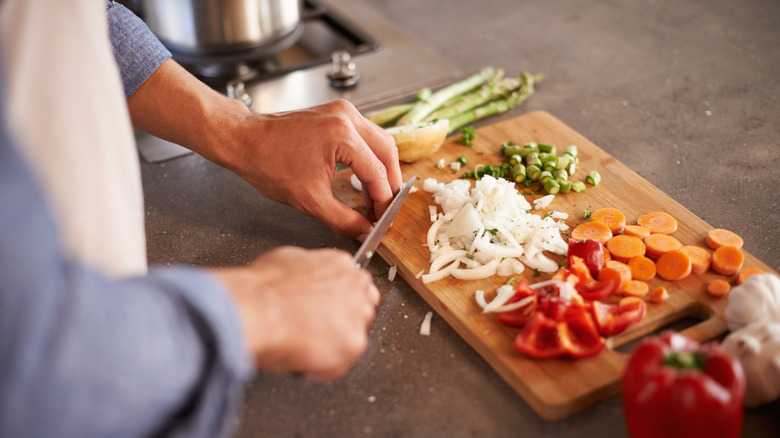How to Make a Zig Zag Cutting Board: Essential Guide for BBQ Enthusiasts
Written By James Morgan
Creating a custom zig zag cutting board can be a fun and rewarding project, especially for barbecue enthusiasts who love to flaunt their culinary skills. With the right materials and tools, you can make a cutting board that's both functional and visually appealing. In this detailed guide, we provide step-by-step instructions, tips, and tricks on how to make a zig zag cutting board to enhance your grilling experience.
Whether you're a novice or experienced woodworker, this guide will walk you through the process of crafting the perfect zig zag cutting board. Let's delve into the exciting world of DIY woodworking!

Materials and Tools
Before you start, gather all the necessary materials and tools for your project:
- Wood (e.g., maple, walnut, cherry)
- Table saw
- Planer
- Jointer
- Clamps
- Wood glue
- Sandpaper
- Measuring tape
- Pencil
- Protective gear (gloves, goggles, mask)
Ensure you have everything ready to make the process smoother and more efficient.

Step-by-Step Instructions
1. Selecting and Preparing the Wood
Choosing the right wood is crucial for the quality and durability of your cutting board. Opt for hardwoods like maple, walnut, or cherry. These are known for their durability and beautiful grain patterns.
Once selected, cut the wood to size using a table saw. Ensure the pieces are straight and even by running them through a jointer. Aim for at least 12 pieces of wood, each measuring about 1x1 inches and 18 inches long.
2. Cutting the Zig Zag Pattern
Arrange the pieces of wood in the order you want them to appear in your cutting board. Mark the zig zag pattern using a pencil and measuring tape. Each zig and zag should be uniform for a neat look.
Use the table saw to cut along the marked lines. Take your time with these cuts, ensuring precision to maintain the pattern's integrity.
3. Gluing the Pieces Together
Once all pieces are cut, apply wood glue to the edges and clamp them together. Make sure the zig zag patterns align correctly. It's vital to use enough clamps to apply even pressure across the entire board. Allow the glue to dry according to the manufacturer's instructions.
4. Sanding and Finishing
After the glue dries, sand the surface of the cutting board to achieve a smooth finish. Start with coarse-grit sandpaper and gradually move to finer grits. Ensure the edges and corners are also well-sanded.
Finish by applying a food-safe mineral oil or cutting board conditioner. This will protect the wood and enhance its appearance.

Maintenance Tips
Your new zig zag cutting board is an investment, and proper care will extend its lifespan. Here are some tips to maintain your board:
- Wash it with mild soap and water.
- Avoid submerging it in water or putting it in the dishwasher.
- Regularly apply mineral oil to keep the wood hydrated.
- Store it in a dry, well-ventilated area.

FAQ
How long does it take to make a zig zag cutting board?
The time required depends on your experience and tools. On average, it can take a few hours to a couple of days, including drying time for the glue.
Can I use other types of wood?
Yes, you can use different hardwoods, but it's essential to choose dense, durable wood for longevity and functionality.
How do I fix a crack in my cutting board?
Cracks can be repaired using wood glue. Apply glue to the crack, clamp it, and allow it to dry. For detailed instructions, you can visit our guide on fixing cracks in cutting boards.
Conclusion
Making a zig zag cutting board is a gratifying project for any barbecue enthusiast. Not only does it showcase your woodworking skills, but it also provides a unique and functional addition to your grilling accessories. With proper tools, materials, and steps, you can craft a cutting board that will serve you for years to come. For more recipes and DIY guides, check out our blog.
As an Amazon Associate, I earn from qualifying purchases.
For more tips and tricks on using cutting boards, visit this comprehensive guide.



